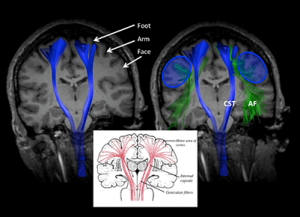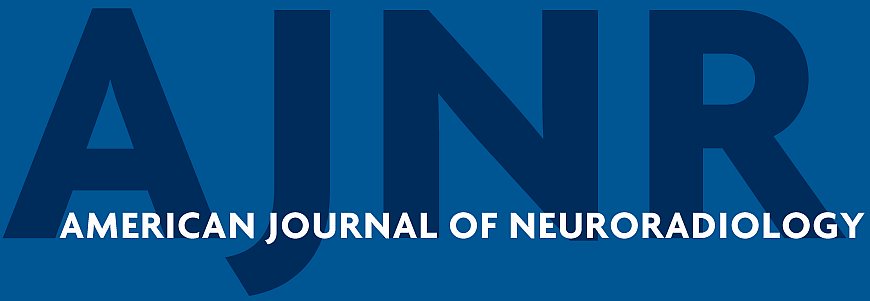Fellow education guide
Unlike medical students and residents, fellows should be performing at a relatively high level already. After completing a residency, fellows should be confident reading the vast majority of scan types, including radiographs, CTs, and MRIs of the entire neurologic axis, including brain, head & neck, and spine. The fellowship is a time that should be more devoted to becoming faster, better at providing a shorter differential diagnosis, and gaining knowledge about subspecialty areas like brain tumors and head & neck malignancies.
Advanced Topics
Fellows should already be aware of the imaging and management of most common conditions, like hemorrhage, spine degenerative disease, and vascular imaging. Fellows should focus on high end knowledge about more specific conditions. In that way, they should also focus on providing a better differential diagnosis. For example, a fellow should be able to give you some information about the most likely type of brain tumor, not just tell you that a brain tumor is likely to be present.
Fellows should also know more about the details of advanced techniques, like fMRI, MRI spectroscopy, and perfusion imaging. They should also know how to tweak those examinations to obtain optimal imaging.
Brain Tumors
Brain tumors are another common condition encountered in neuroradiology. The most common brain tumors include metastases, primary parenchymal tumors (like gliomas), and meningiomas. Other neoplasms like lymphoma can also affect the brain. It’s good for anyone spending time in radiology to have a good overview of what different brain tumors look like. As mentioned above, a fellow should know more about different types of tumor, their management, and how different factors like genetic markers contribute to the diagnosis and prognosis.
There is a dedicated lecture about these brain tumors:
To learn more, check out the page specifically devoted to the topic of brain tumors:
Advanced Imaging
There are several advanced MRI techniques for more sophisticated imaging of brain structure and function. The most common advanced imaging techniques include spectroscopy, perfusion, diffusion tensor imaging (DTI), and functional MRI (fMRI). Fellows should be familiar with the general application of these techniques and how they can contribute to the diagnosis and management of these disorders.
There is a dedicated lecture about advanced brain imaging:
To learn more, check out the page specifically devoted to Advanced MRI:
Procedures
Procedures are a key part of neuroradiology. The most commonly performed procedures include: lumbar punctures, myelograms, cisternograms, biopsies, and blood patches. Fellows should be experts in common procedures, namely lumbar punctures and myelograms, and be capable of teaching them to other trainees such as medical students. They should know about the contraindications, including risks of bleeding, and be able to adapt in a complex patient. have a rudimentary knowledge of these procedures, including indications for performing them, how they are performed, and common risks and contraindications.
There is a dedicated lecture about neuroradiology procedures
Explore more about the topic here
Reading materials
By the time a trainee reaches fellowship, they should generally be moving beyond using textbooks. Textbooks can cover a topic in some depth, but cannot be adapted with the speed required to keep up with the most up-to-date techniques. For this reason, fellows should focus on papers in the literature about a given topic. A good way to approach this is to find review papers about a topic of interest in key journals. When in depth analysis is required, the most recent research papers on a topic can then be read. That said, there are a few books which are useful either as reference materials or as advanced reading, described more below. Books have a more limited role. For a more complete list of books I recommend, see the full list here.
Books
A couple of advanced books can be pretty useful at the fellow level. These tend to be more advanced books or books on more specific topics. While there is a place for a book like Neuroradiology Requisites, for the most part a fellow should move beyond texts at this level. The following is a list of books that you might check out depending on the topic. These are largely reference books you may continue to refer to throughout your career.
Osborn’s Brain – Anne Osborn, Gary Hedlund, Karen Salzman
This is a high-level book which provides a lot of detail about imaging of the brain in almost all of its areas. This book is extremely readable, thorough, and considered the standard for imaging of the brain. It’s a go-to book that I often return to, and any fellow or faculty will want to have this on their bookshelf. The book also comes with electronic access, which is nice as a reference.
Essentials of Osborn’s Brain – Anne Osborn
This is a revised version of Osborn’s high-level book which is more abbreviated for the junior trainee. This probably makes it more appropriate for the student or resident level with a little bit less detail. Given the lower price and the fact that most residents won’t need all that detail, it’s probably a good starting place for most residents and even some fellows. If you want more detail, then you can go for the full book.
Problem Solving in Neuroradiology – Meng Law, Peter Som, Thomas Naidich
I actually really like this book. I’m sad to learn that the print edition appears to be out of print and doesn’t seem like it’s going to be updated. For that reason, I’m linking to the electronic edition here. It’s a very approachable, nuts and bolts sort of way of approaching neuroradiology. Several chapters at the beginning are devoted to modalities such as advanced MRI and PET/CT. The majority of the book is devoted to a disease category based approach to the explanations. It’s very easy to sit down and read a relevant section, and the level is appropriate for a senior resident through a faculty who wants a nice focused review. My only complaint is that there is some repetitiveness between chapters (especially if you were reading straight through), but it’s less of a problem because the format of the book is more suitable to targeted reading of one chapter at a time based on level of interest. This is a nice book for fellows.
Pediatric Neuroimaging – James Barkovich, Charles Raybaud
This is the quintessential reference book in pediatric neuroradiology, written by one of the founding fathers of pediatric neuroradiology as a subspecialty, Jim Barkovich. This book is very detailed and an excellent reference for pediatric imaging. Only the truly hardcore will sit down with this book and read from start to finish, but it has excellent and updated coverage of most of the major pediatric imaging topics today. A fellow on a pediatric rotation could probably benefit from reading some of the key chapters. If you were going to have a more extensive experience or continue reading pediatrics as part of your career, this would be a great addition to your library.
Brain Tumor Imaging – Rajan Jain, Marco Essig
This is a pretty good book that covers the entire scope of brain tumor imaging pretty well, including the use of advanced imaging such as spectroscopy and perfusion. A lot of the content covered could be obtained from reading a bunch of review papers, but it’s nice to have it all in one spot. A fellow with specialized interest in brain tumor imaging or neuroradiology faculty would find this book useful. It’s also very readable and pretty approachable given the density of the topic.
Image-Guided Spine Intervention – Douglas Fenton and Leo Czervionke
There is one very good book on neuroradiology procedures that is somewhat difficult to find, as it is not in wide print and was published in 2002. However, it has nice coverage of some more advanced procedures (primarily pain procedures) as well as some basics, such as needle guidance techniques. If you can get a copy, it’s definitely worthwhile. Any fellow interested in learning procedures, including pain procedures, would enjoy this book. The first chapter covers some great basics of procedures, but it’s probably not worth getting just for that.
*disclaimer: links on this page are Amazon affiliate links. I get a small referral fee which helps fund this site if you purchase through these links.
Journals
There are a couple of key journals which are great for fellow education. I recommend that you check these journals out routinely and look to them for reference articles.
American Journal of Neuroradiology, or AJNR, is the flagship publication of the American Society of Neuroradiology (ASNR). It often has the most up-to-date neuroradiology research articles and occasional reviews which are worth checking out.
Radiographics is a great source of review articles. It is the educational publication of RSNA, and has a lot of great review content. It’s been publishing great review articles for years, so chances are there is a great review about the topic you are interested in.
Like Radiographics, Neurographics is the educational publication ofASNR. It has similar high quality reviews but covers only neuroradiology. You’ll find a lot of great review articles here.
Exam prep
Unfortunately, fellows have to keep preparing for the ABR licensing examinations on the top of their mind. With the restructured exam format, there are two exams that a fellow should have in the back of their mind.
ABR certifying exam
With the restructured exam format, the certifying exam occurs 15 months after completion of a residency, or 3 months after a one year fellowship. For this reason, fellows should be thinking about it during fellowship so that there are no surprises in that 3 month period when starting a new job.
Applicants get to choose up to 3 sections of their choice. Anyone who has done a neuroradiology fellowship should choose 3 neuro sections. For more detailed information about how to prepare, check out the full guide.
Neuroradiology CAQ exam
The certificate of added qualification exam offered by the ABR is something that anyone completing a neuroradiology fellowship should consider. It’s expensive and painful, but many hospitals may require it, and you may regret not having it at some indefinite point in the future. It’s really an individual question of whether one should take it.
The material is esoteric and the questions poorly written, often focusing on things that cannot be readily differentiated in clinical practice. However, it’s the test we’ve got. Check out the full guide below.
Job search
Finally, as a fellow, you’re going to want to get a job. This is something you should usually be thinking about during the last year of your residency or at the beginning of a fellowship. For those unfortunate souls doing 2 year neuroradiology fellowship, you have a little bit more time. I’ve put together a series of 2 posts with general information about pursuing your ideal job you can find below:
All posts for fellows
Of course, this is only the beginning. Check out the remainder of the site to see what other content is here. To see all posts tagged for fellows, click here:
Thanks for stopping in!






